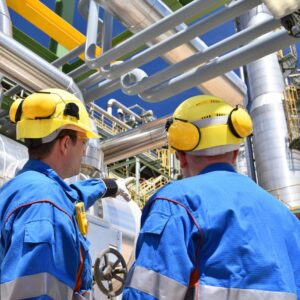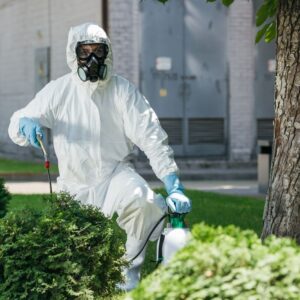 Prevent chemical exposure — Chemical exposure in the workplace can cause harm ranging from mild irritations to cancer and even death. According to the Occupational Safety and Health Administration (OSHA), more than 13 million workers in the United States could be exposed to chemicals that can be absorbed through the skin. Industries that involve chemical exposure include agriculture, construction, healthcare, manufacturing, mining, oil and gas, and warehousing. This is an important topic for those who work with or around chemicals.
Prevent chemical exposure — Chemical exposure in the workplace can cause harm ranging from mild irritations to cancer and even death. According to the Occupational Safety and Health Administration (OSHA), more than 13 million workers in the United States could be exposed to chemicals that can be absorbed through the skin. Industries that involve chemical exposure include agriculture, construction, healthcare, manufacturing, mining, oil and gas, and warehousing. This is an important topic for those who work with or around chemicals.
How does chemical exposure happen?
 Workers can be exposed to chemicals through inhalation, ingestion, skin contact, or eye contact. Some of the symptoms of chemical exposure are headaches, nausea, dizziness, rashes, burns, breathing difficulties, or organ damage. Some of the long-term effects of chemical exposure are cancer, neurological disorders, reproductive problems, or birth defects.
Workers can be exposed to chemicals through inhalation, ingestion, skin contact, or eye contact. Some of the symptoms of chemical exposure are headaches, nausea, dizziness, rashes, burns, breathing difficulties, or organ damage. Some of the long-term effects of chemical exposure are cancer, neurological disorders, reproductive problems, or birth defects.
To prevent chemical exposure and to protect yourself and control hazards at workplaces where you or coworkers are exposed to chemicals and other toxic substances, follow these OSHA suggestions:
- Substitute with safer alternatives. See if a safer alternative exists and use it to eliminate the chemical hazard. Get the Transitioning to Safer Chemicals toolkit at osha.gov/safer-chemicals.
- Read Safety Data Sheets before using hazardous materials.
- Use the personal protective equipment required for the job to reduce exposure.
- Utilize engineering controls. This can mean changing the process to minimize contact, isolating or enclosing the process, using fume hoods, and other measures.
- Talk to your supervisor about adjusting your work schedule or rotating assignments to prevent you from being overexposed to hazardous chemicals.
PPE & preventing chemical exposure
Personal protective equipment (PPE) is designed to protect the user from serious injuries or illnesses that may come from contact with chemical hazards and toxic substances.
PPE reduces the risk of exposure to chemicals through inhalation, ingestion, skin contact, or eye contact. Additionally, it can minimize or prevent the symptoms and long-term effects of chemical exposure. You must choose your PPE based on the type, concentration, and manner of exposure (skin contact, fumes, etc.) to the chemical(s).
Types of PPE
- Respirators
- Gloves
- Goggles
- Protective clothing
- Boots.
Always follow the safety directions that come with your PPE – taking shortcuts could be deadly. Remember to follow other safety methods, as well; that is, the manner in which you handle or store chemicals cannot be replaced with your PPE. It is common practice to use layers of safety methods. Regularly inspect, and always maintain and clean your PPE so that it stays effective and keeps you safe.

Final thoughts
Safety in the workplace is always a favorite topic at A.R.M. Even so, preventing chemical exposure can’t be mentioned enough. The risks of harm and loss of life are so great that it deserves frequent mention. If you work with or around chemicals, please learn about the chemicals and what is required to be safe. Keep your PPE in good working order and always follow the posted safety rules at your workplace. Stay safe out there!
Find out about A.R.M.’s many services and how we can help you succeed!


